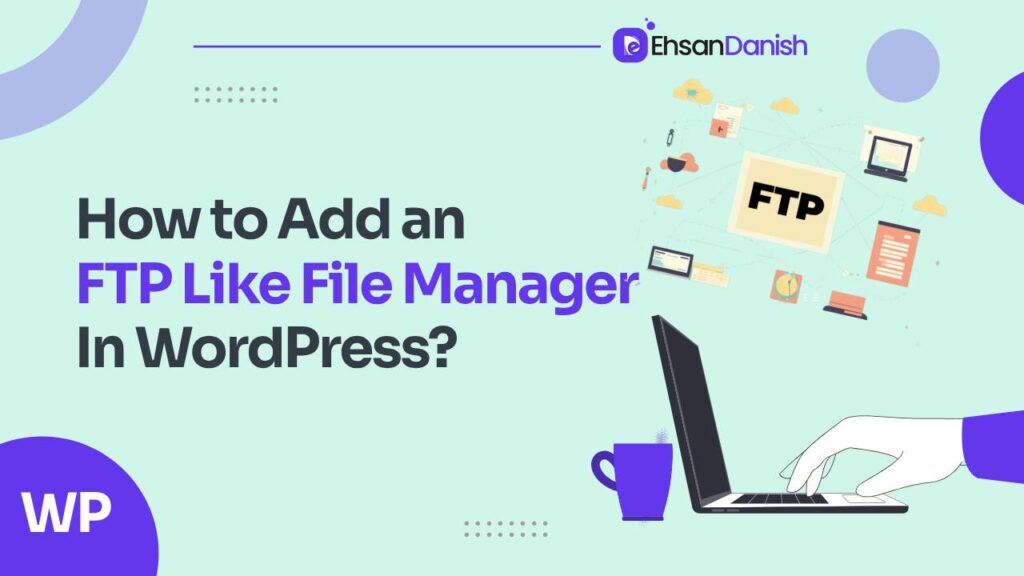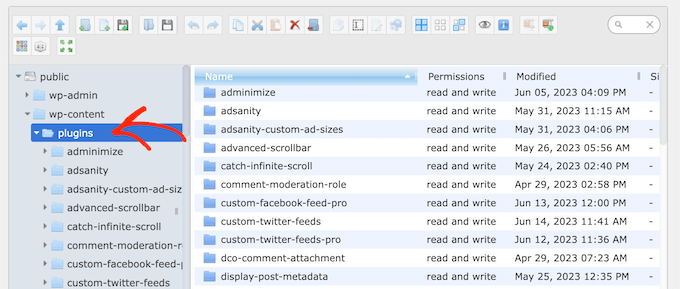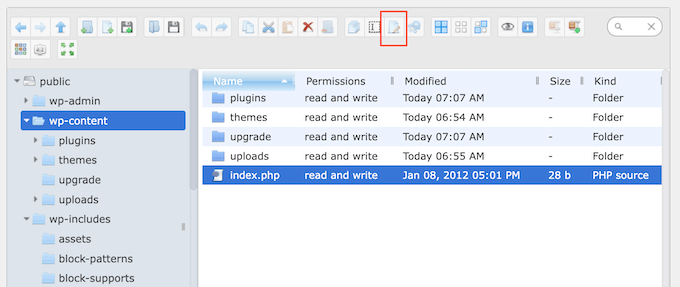Tired of the back-and-forth between FTP clients and cPanel when dealing with your WordPress site? It can feel like a circus act! But fear not, we’ve got a solution that’ll make file management a breeze. Say hello to adding an FTP-like file manager to your WordPress admin dashboard. No more juggling, just smooth sailing. Sounds good, right? Say goodbye to confusion and hello to file management superpowers with our guide on How to add an FTP like File Manager in WordPress.
In this guide, we’ll walk you through the process of effortlessly incorporating an FTP-like file manager directly into your WordPress dashboard. Let’s ditch the confusion and get started!
Why Consider an FTP-Like File Manager in WordPress?
When it comes to secure file transfers in WordPress, using an FTP client supporting SSH or SFTP protocols is the standard recommendation. However, situations may arise where access to FTP or your web hosting provider’s cPanel is limited, especially in multi-author WordPress blogs with restricted permissions.
In such scenarios, a file manager becomes indispensable, providing a web-based solution for editing, previewing, uploading, and downloading WordPress configuration files and more—a functionality akin to an FTP client within the WordPress admin dashboard.
Comparison Between FTP and FTP-Like File Managers
| Feature | FTP | FTP-Like File Manager |
|---|---|---|
| Interface | Command-line or basic GUI | Advanced graphical user interface (GUI) |
| Ease of Use | Moderate to difficult; requires familiarity with command-line operations or basic GUIs | Easy; designed for intuitive navigation and file management |
| Protocols Supported | Primarily FTP; some clients support SFTP/FTPS | Supports multiple protocols such as FTP, SFTP, FTPS, and cloud storage services |
| Integration with Tools | Limited; primarily focused on file transfer | Extensive; often includes built-in text editors, image viewers, and integration with other applications |
| User Management | Basic; typically only involves setting up usernames and passwords | Advanced; includes features for managing user permissions, roles, and access controls within the application |
| Automation and Scheduling | Limited; some clients may offer basic scripting capabilities | Extensive; supports automated tasks, scheduled file transfers, and synchronization features |
| Use Cases | Direct server access for tasks such as uploading/downloading files, performing backups, and managing website content | Enhanced file management, seamless integration with cloud services, easy file transfers for non-technical users |
| Pros | Robust and well-established protocol; provides direct access to server files; widely supported across different platforms | User-friendly and visually intuitive; supports multiple protocols and services; offers additional features and tools for comprehensive file management |
| Cons | Steeper learning curve, especially for beginners; less user-friendly compared to graphical interfaces | May require more system resources than basic FTP clients; and can be less flexible for advanced command-line operations |
If you want to know more kindly visit our separate guides on FTP Client and How to Use FTP to upload files.
How to add an FTP like File Manager in WordPress
Using the File Manager Plugin
The most straightforward way to integrate an FTP-like file manager is through the File Manager plugin. This tool offers a user-friendly interface for editing files on a remote server, making the process hassle-free.
Step 1: Install and Activate the File Manager Plugin
Begin by installing and activating the File Manager plugin.
Step 2: Accessing WP File Manager
Upon activation, locate the new WP File Manager option in the WordPress sidebar. Click on it to open the file manager application, revealing all your WordPress files and folders.
Step 3: Utilizing the File Manager Toolbar
Above the files, a toolbar akin to settings in an FTP client will appear. This toolbar encompasses all the necessary features for previewing, editing, uploading, downloading, and deleting files or folders.
Step 4: Navigating File and Folder Operations
To interact with a file or folder, simply click on it and choose your desired action from the File Manager toolbar. If you are accustomed to FTP clients, you’ll find the folder operations to work similarly.
Step 5: Editing Files and Folders
To edit a file on your WordPress blog, click on the ‘Edit file‘ button. This will open the file in a new window, allowing you to make necessary changes.
Step 6: Previewing Files
For a quick preview of a file’s contents, click on the ‘Preview‘ button—an eye icon in the toolbar.
Step 7: Uploading Files
To streamline media file uploads, navigate to the ‘wp-content » uploads‘ folder and click on the ‘Upload Files‘ button. You can also upload and extract zip files directly within the file manager.
By following these steps, you’ve successfully added an FTP-like file manager to your WordPress site, enhancing your ability to manage files efficiently.
Conclusion
Managing files in WordPress can now be effortless with the addition of an FTP-like file manager directly in your admin dashboard. By using the File Manager plugin, you can easily edit, preview, upload, and download files with a user-friendly interface. Say goodbye to the back-and-forth between FTP clients and cPanel – with this solution, file management becomes a breeze. So, simplify your workflow and gain file management superpowers in WordPress today!








